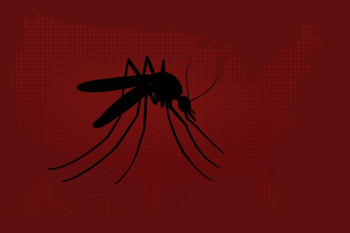
- June 2018
- Volume 3
- Issue 3
Is Investment in New Technologies for Diagnosing Schistosomiasis Justified in an Era of Schistosoma Elimination?
The emergence of new species creates pressure for developing affordable and reliable diagnostic strategies.
Schistosomiasis is currently considered controlled and close to elimination in some regions of the world. However, a pitfall remains—the lack of a reliable diagnosis strategy for surveillance of transmission areas. Despite their high specificity, parasitological methods tend to decline in sensitivity in parallel with the decrease of infection endemicity and parasite load. Therefore, parasitological tests such as the Kato-Katz technique do not allow for determining the real prevalence in low-endemic areas before and after praziquantel (PZQ) use.1 This has become worrisome now that a Schistosoma hybrid species has emerged in Europe in Corsica.2 Determining the disease’s prevalence pre- and post intervention with preventive chemotherapy in areas of schistosomiasis control or elimination, as well as identifying the emergence of “new Schistosoma species,” have become among the greatest issues of the past decade.3,4 Despite the increased development of new strategies to detect active schistosomiasis, the best way to tackle those challenges with the present diagnostic tools remains unclear.
New hope arose with the development of parasitological tests that involve egg-enrichment methods such as Helmintex. This test uses magnetic beads to trap eggs in a magnetic field and then provides a microscopic readout. It is a very sensitive technique for detecting eggs of the genera Schistosoma, distinguishing both Schistosoma mansoni and Schistosoma japonicum. Furthermore, Helmintex exhibits 100% sensitivity at 1.3 eggs per gram of feces.5 The results suggest that this test might be a suitable choice for use in low-worm-burden and low-endemic areas.6 The method also enhances egg recovery and might improve the identification of species-specific ova by light microscopy. One major concern is that this test might be time-consuming when applied in community and institutional settings. Also, species-specific differences in the ability of eggs to bind to the magnetic beads should be investigated to extend its use to urinary schistosomiasis and other Schistosoma infections, including those induced by hybrid species.
Alternatives to parasitological methods such as antigen detection and molecular diagnosis have also been investigated intensively over the past several years. Tests such as lateral flow—based assays were developed to detect Schistosoma glycoproteins circulating in cathodic antigen (CCA) and anodic antigen (CAA). The use of these rapid tests with point-of-care (POC) platforms provoked turmoil in areas of transmission surveillance, though, because of POC-CCA’s initial higher accuracy for diagnosing active infection caused by S mansoni in high- and moderate-endemic areas. Also, the results showed a high correlation between parasite load (number of eggs) and the intensity of reaction detected by the strips.7,8
However, some of the results were disturbing. For instance, daily variability was frequently observed in school-children before and after PZQ treatment. Also, the accuracy of POC-CCA may vary in areas of low ende­micity and infections with low parasite burden, in contrast to areas of high and moderate endemicity.6,9,10 POC-CAA seems to improve S mansoni antigen detection in samples from different endemicity areas, but, to be fair, because of its commercial availability, POC-CCA has been better researched. Further studies are required to establish the advantages and applicability of each approach as a poten­tial reference test or complementary diagnostic strategy in transmission areas. So far, antigen detection of other Schistosoma species such as Schistosoma haematobium using CCA and CAA have proved quite disappointing. POC—CCA and POC-CAA performances in areas of hybrid species transmission have not yet been evaluated.
Molecular—based assays are also compelling strategies for schistosomiasis diagnosis. Methods such as polymerase chain reaction (PCR) (conventional and real-time) show promise, providing high sensitivity and specificity.1 Real-time PCR is a quantitative method suitable for determining the prevalence pre- and postintervention, even in low-en­demic and non-endemic areas in the presence of a very low worm burden.11 Also, DNA-based tests are less affected by daily variability, and different Schistosoma species can be detected in the same sample.12 A major criticism related to the use of DNA-based assays such as conventional and real-time PCR is the allegedly high costs of the reagents, the machinery, and technical training. To circumvent these issues, techniques such as the loop-mediated isothermal amplification (LAMP) assay for detection of Schistosoma species in biological samples and intermediary hosts were developed. Applying LAMP, which is more affordable and less technically challenging, in field surveys is showing the molecular method’s potential to reliably demonstrate active, simultaneous Schistosoma infection by distinct species. LAMP also detects light infections in low-endemic areas.13 DNA-based assays might be a promising supple­mental strategy for use in surveillance systems in national programs for control and elimination of Schistosoma in transmission areas13,14 and as a diagnostic tool and marker of response to therapy in institutional settings (see
Accurate diagnosis of schistosomiasis remains a perma­nent challenge. The emergence of new species and the true determination of prevalence by surveillance systems in areas of schistosomiasis elimination create huge pressure for developing affordable and reliable diagnostic strategies. New technologies for the diagnosis of active schistosomi­asis are the future, and they must be realized in an affordable manner to be able to compete in the new landscape of Schistosoma infection elimination.
Dr. Cavalcanti received an MD and a PhD in sciences (microbiology) from the Federal University of Rio de Janeiro in Brazil (UFRJ). She was awarded postdoctoral scholarships for the development of immunological research studies at the University of California, Los Angeles, and Ohio State University, in Columbus.
Dr. Peralta received an MD from the University of Gama Filho in Rio de Janeiro, Brazil; a PhD in sciences (microbiology) from the Federal University of Rio de Janeiro (UFRJ); and a postdoctoral by Georgia State University in Atlanta. He is a full professor at UFRJ.
References
- Cavalcanti MG, Silva LF, Peralta RH, Barreto MG, Peralta JM. Schistosomiasis in areas of low endemicity: a new era in diagnosis. Trends Parasitol. 2013;29(2):75-82. doi: 10.1016/j.pt.2012.11.003.
- Moné H, Holtfreter MC, Allienne JF, et al. Introgressive hybridizations of Schistosoma haematobium by Schistosoma bovis at the origin of the first case report of schistosomiasis in Corsica (France, Europe). Parasitol Res. 2015;114(11):4127-4133. doi: 10.1007/s00436-015-4643-4.
- Utzinger J, Becker SL, van Lieshout L, van Dam GJ, Knopp S. New diagnostic tools in schistosomiasis. Clin Microbiol Infect. 2015;21(6):529-542. doi: 10.1016/j.cmi.2015.03.014.
- Kincaid-Smith J, Boissier J, Allienne JF, Oleaga A, Djuikwo-Teukeng F, Toulza E. A genome wide comparison to identify markers to differentiate the sex of larval stages of Schistosoma haematobium, Schistosoma bovis and their respective hybrids. PLoS Negl Trop Dis. 2016;10(11):e0005138. doi: 10.1371/journal.pntd.0005138.
- Candido RR, Favero V, Duke M, Karl S, Gutiérrez L, et al. The affinity of magnetic microspheres for Schistosoma eggs. Int J Parasitol. 2015;45(1):43-50. doi: 10.1016/j.ijpara.2014.08.011.
- Oliveira WJ, Magalhães FDC, Elias AMS, et al. Evaluation of diagnostic methods for the detection of intestinal schistosomiasis in endemic areas with low parasite loads: saline gradient, Helmintex, Kato-Katz and rapid urine test. PLoS Negl Trop Dis. 2018;12(2):e0006232. doi: 10.1371/journal.pntd.0006232.
- Coulibaly JT, N’Gbesso YK, Knopp S, et al. Accuracy of urine circulating cathodic antigen test for the diagnosis of Schistosoma mansoni in preschool-aged children before and after treatment. PLoS Negl Trop Dis. 2013;7(3):e2109. doi: 10.1371/journal.pntd.0002109.
- Colley DG, Binder S, Campbell C, et al. A five-country evaluation of a point-of-care circulating cathodic antigen urine assay for the prevalence of Schistosoma mansoni. Am J Trop Med Hyg. 2013;88(3):426-432. doi: 10.4269/ajtmh.12-0639.
- Bezerra FSM, Leal JKF, Sousa MS, et al. Evaluating a point-of-care circulating cathodic antigen test (POC-CCA) to detect Schistosoma mansoni infections in a low endemic area in north-eastern Brazil. Acta Trop. 2018;182:264-270. doi: 10.1016/j.actatropica.2018.03.002.
Articles in this issue
over 7 years ago
Teamwork Makes the Dream Workover 7 years ago
Cutting the Drug Development Red Tapeover 7 years ago
It Takes Two to TANGO With a Carbapenemaseover 7 years ago
Flu Season 2017-2018: A Look at What Happened and What's to Comeover 7 years ago
Searching for the Cause of Hearing Loss in a Patient With HIVover 7 years ago
Diagnosis and Management of Gram-Negative Nosocomial InfectionsNewsletter
Stay ahead of emerging infectious disease threats with expert insights and breaking research. Subscribe now to get updates delivered straight to your inbox.

































































































































































































































































































